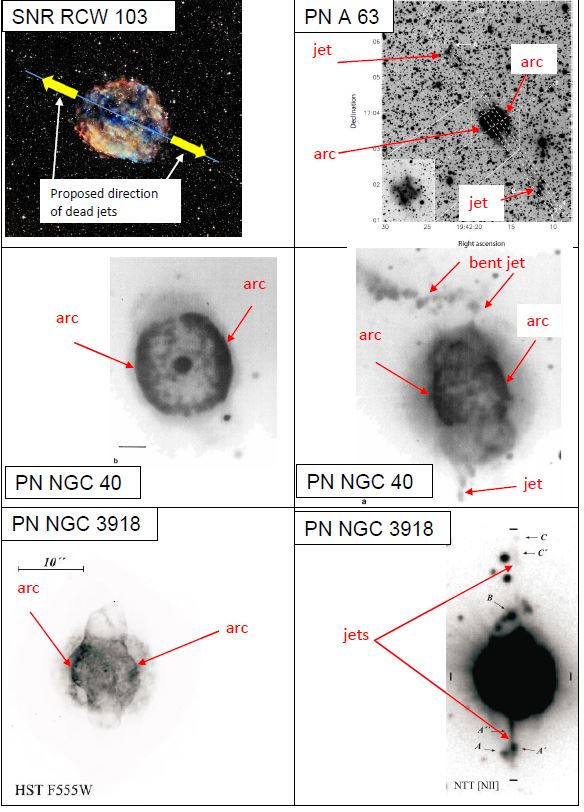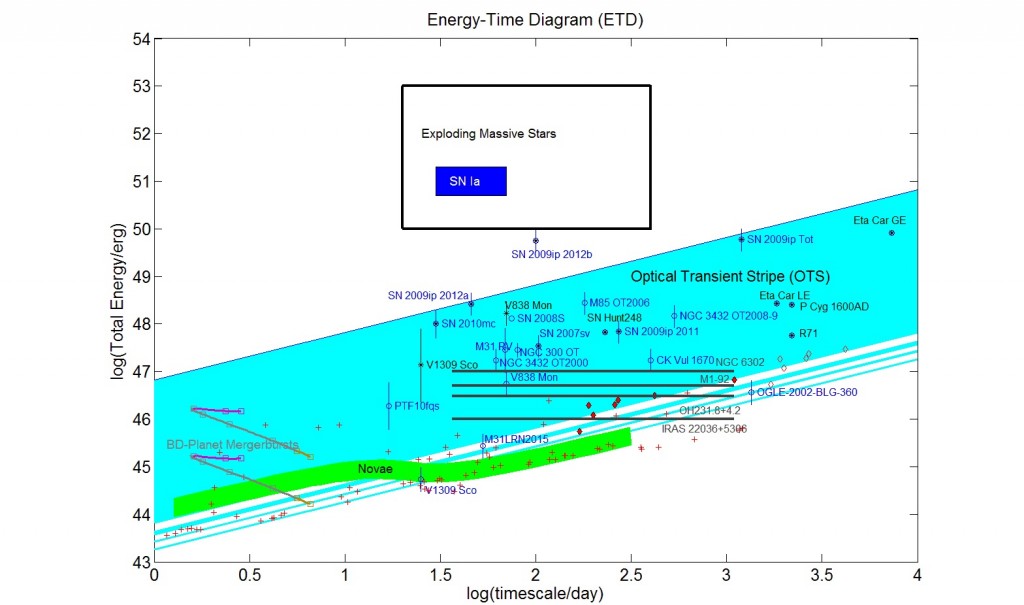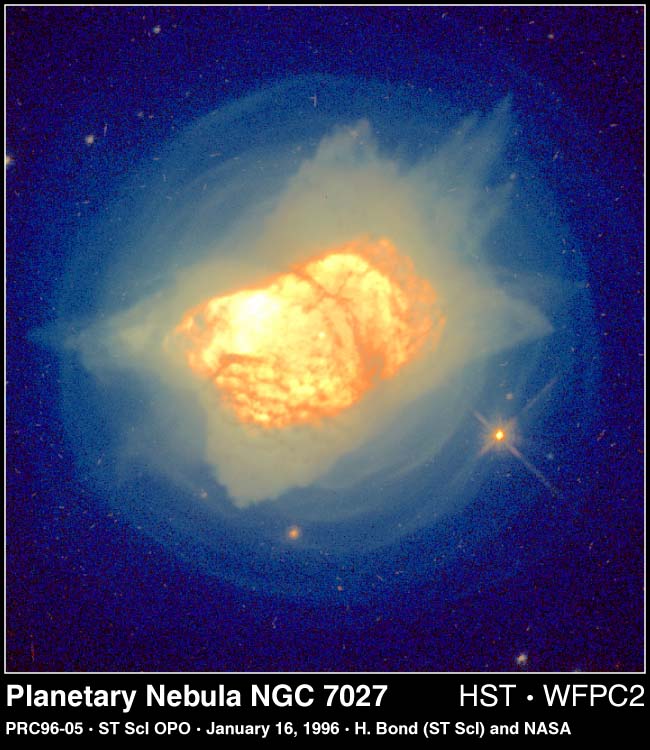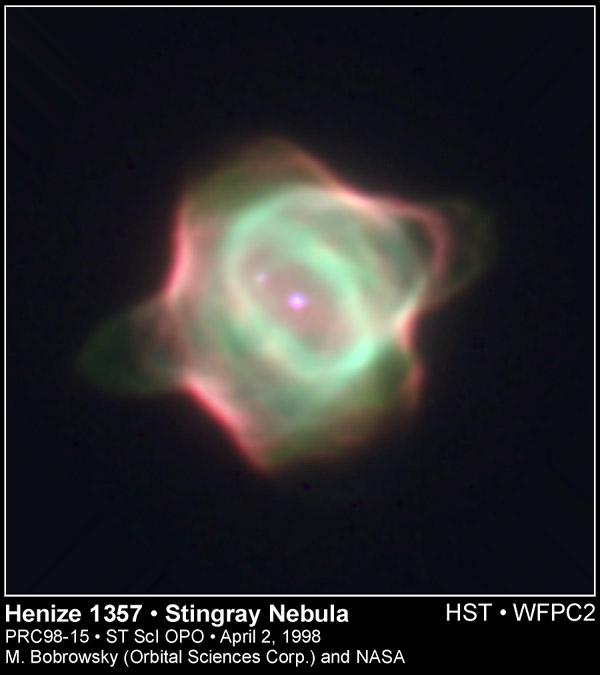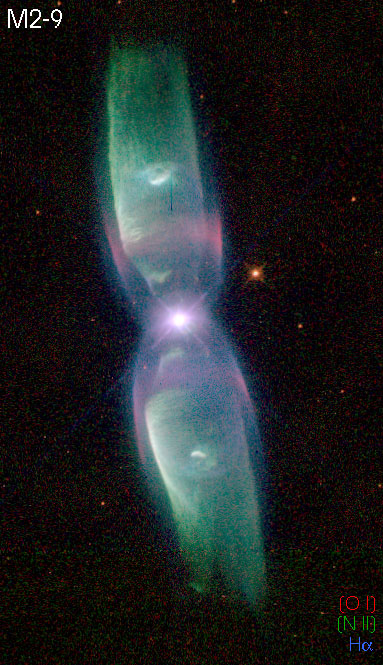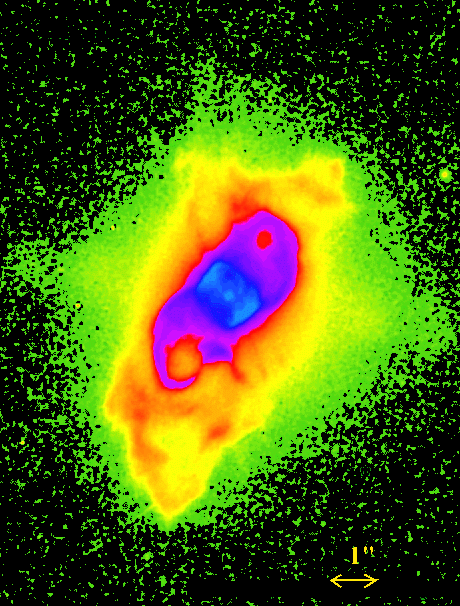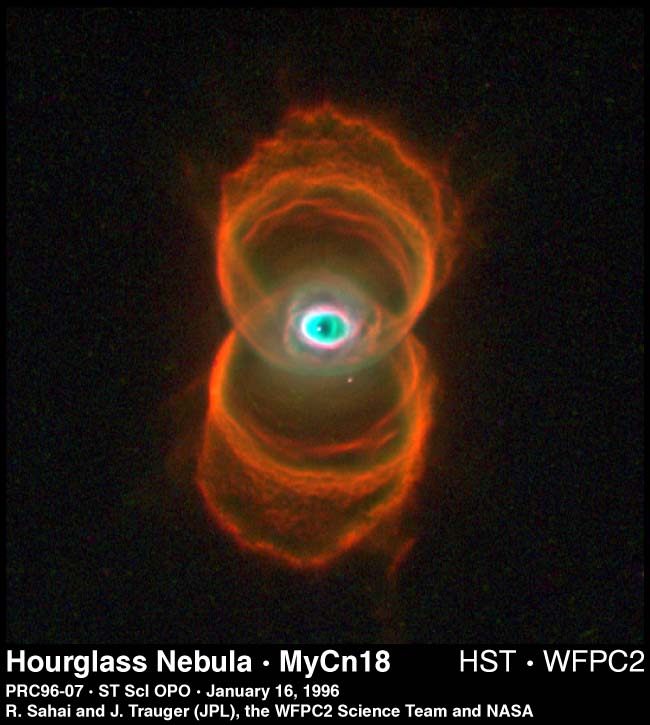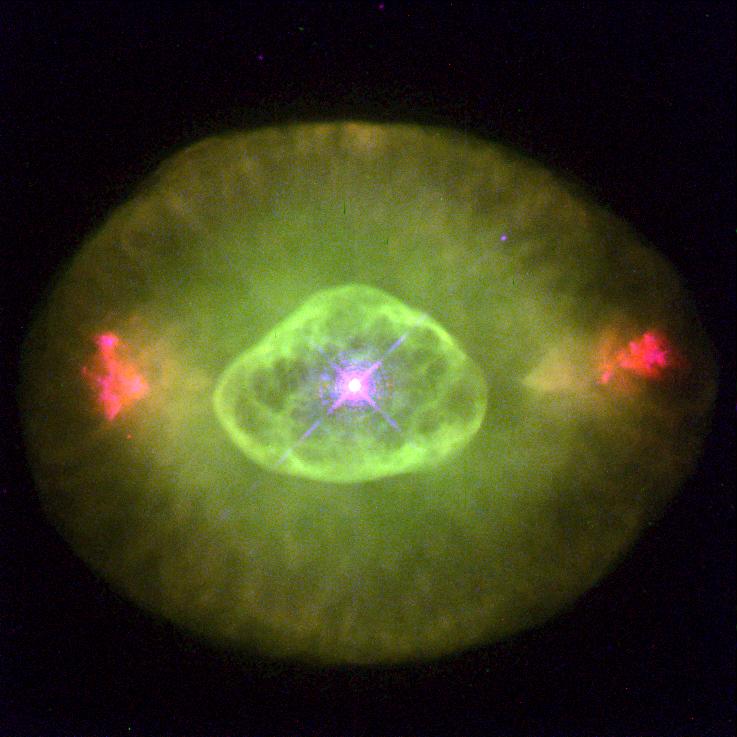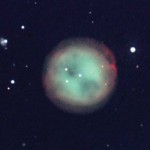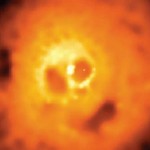See also Publications and News
Supernovae
With collaborators we have been developing the jet feedback mechanism to explain the explosion of massive stars. The morphology of some supernovae show indeed signatures of jets, sometimes similar to planetary nebulae. We take such morphological features to indicate that massive stars are exploded by jets.
On the left isan image from the paper by Ealeal Bear, Aldana Grichener & Noam Soker. This figure compares similar morphological features between the supernovae remnant RCW 103 and three planetary nebulae, A 63 (image taken from Mitchell et al. 2007), NGC 40 (both images are from Meaburn et al. 1996), and NGC 3918 (both images are from Corradi et al. 1999; images are rotated so that the jets are vertical). The image of RCW 103 is a composite X-ray image
in three energy bands (low=red, medium=green, highest=blue) combined with an optical image from the Digitized Sky Survey (image taken from the Chandra website based on Reaet al. 2016). The proposed original directions of the, already dead, jets in the super ova remnant RCW 103 are marked by yellow thick arrows.
ILOTs: Intermediate-Luminosity Optical Transients
With Amit Kashi we classify objects with luminosity between novae and supernovae. We argue that most of them are powered by gravitational energy of stellar merger or accretion in a binary system. For details see here.
Morphology
One of my research topics is to explain the similar morphologies of some of the objects, as seen in the figures below (the colors are not real). The common shaping mechanism is the launching of jets by a compact object at the center. Images are mostly from the Hubble Space Telescope.
אחד מתחומי המחקר שלי עוסק בניסיון להסביר את המבנה הדומה של גרמי שמים שונים. דוגמאות מוצגות כאן (הצבעים לא אמיתיים). המנגנון המשותף האחראי ליצירת המבנים מבוסס על שני סילוני גז הנפלטים בכיוונים הפוכים על ידי עצם קומפקטי במרכז. התמונות ברובן הן של טלסקופ החלל על שם האבל.
Planetary Nebulae: The figures above are images of planetary nebulae — clouds of gas around dying-sun like stars. Typical size is one light year. For more information, credits, and explanation see catalog compiled by Bruce Balick.
ערפיליות פלנטריות: התמונות למעלה הן של ערפיליות פלנטריות – ענני גז סביב כוכבים בשלב סיום חייהם הפעילים. גודל אופייני הוא שנת אור. תמונות נוספות עם המקורות ניתן למצוא בקטלוג של ברוס באליק.
The gas around the massive binary system Eta Carinae (left) and around Supernovae 1987A (right) have shapes similar to that of some planetary nebulae. For more on the similarities see my Perspective in Science (2007).
מבנים של הגז סביב סופרנובה 1987 (ימין) וסביב זוג הכוכבים הכבד אטה קרינה (שמאל) דומים למבנים של מספר ערפיליות פלנטריות. (לפרטים נוספים על הדמיון במבנה: הרצאתי אטא קארינה: זוג הכוכבים הכבד ביותר בגלקסיה בקישור להרצאות פופולריות.)
More intriguing is the similarity of some planetary nebulae to X-ray deficient bubbles in clusters of galaxies. On the left is The Owl planetary nebula shown in optical light (Guerrero et al. 2003), and on the right is the Perseus cluster of galaxies taken in X-ray by the Chandra X-ray Observatory. At the center of both objects there is a pair of fainter bubbles. The right image covers a region more than ten thousand times as large as the region covered by the left image. The cloud of gas in the planetary nebula (left) is at about ten thousands degrees Kelvin (or Celsius), while the cluster’s gas (right) is at a temperature of tens of millions of degrees Kelvin. The bubbles are formed by fast jets, one jet per bubble, which inflate the bubbles by filling it with hot tenuous gas.
For more on the comparison between planetary nebulae and clusters of galaxies see my News & Views in Nature (2003).
מדהים יותר הוא הדמיון של מספר ערפיליות פלנטריות לתמונה בקרינת-X (קרינת רנטגן) של גז חם בצבירי גלקסיות. מימין למעלה תמונה בקרינת-X של הגז החם (עשרות מיליוני מעלות קלווין) בצביר הגלקסיות פרסאוס בפי שצולמה על ידי טלסקופ קרינת-X הנמצא בחלל. משמאל ערפילית פלנטרית. הגז בערפילית נמצא בטמפרטורה של עשרת אלפים מעלות ופולט אור בתחום הנראה. צביר הגלקסיות גדול יותר מפי עשרת אלפים מהערפילית. בשני העצמים רואים זוג בועות עם בהירות נמוכה. כל בועה נוצרת מסילון המנפח את הבועה על ידי מילואה בגז חם יותר ודליל יותר מהסביבה. הסילונים בצביר נפלטים על ידי חור שחור סופר-כבד. (לפרטים נוספים על הדמיון במבנה: הרצאתי שעוני חול: מכוכבים מתים ועד צבירי גלקסיות בקישור להרצאות פופולריות.)
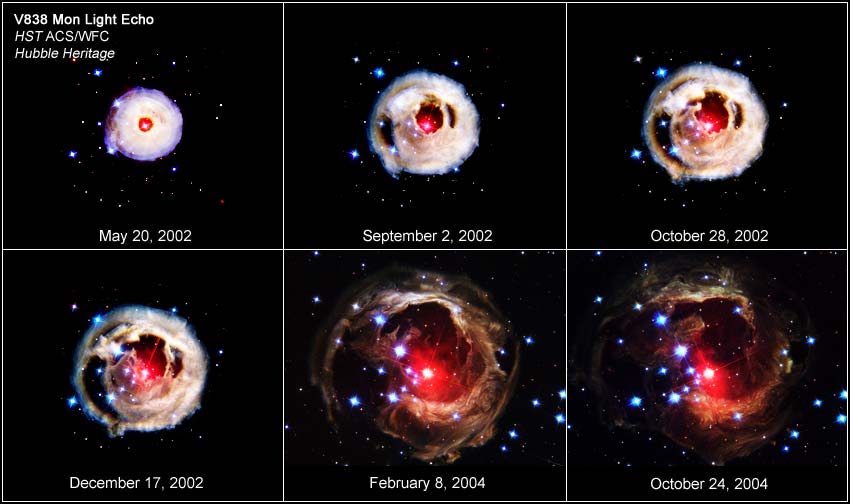
On a possible connection of this beautiful evolution of the light-echo from V838 Monocerotis and the Great Eruption of Eta Carinae see News & Views in Nature (2012) with my former PhD student Amit Kashi.
בתמונה נראה הד-אור מתפשט מהתפרצות של כוכב הנקרא V838 Monocerotis.
על קשר אפשרי לאטה קארינה כתבתי מאמר (באנגלית) עם עמית קאשי שסיים דוקטורט בהנחייתי.

